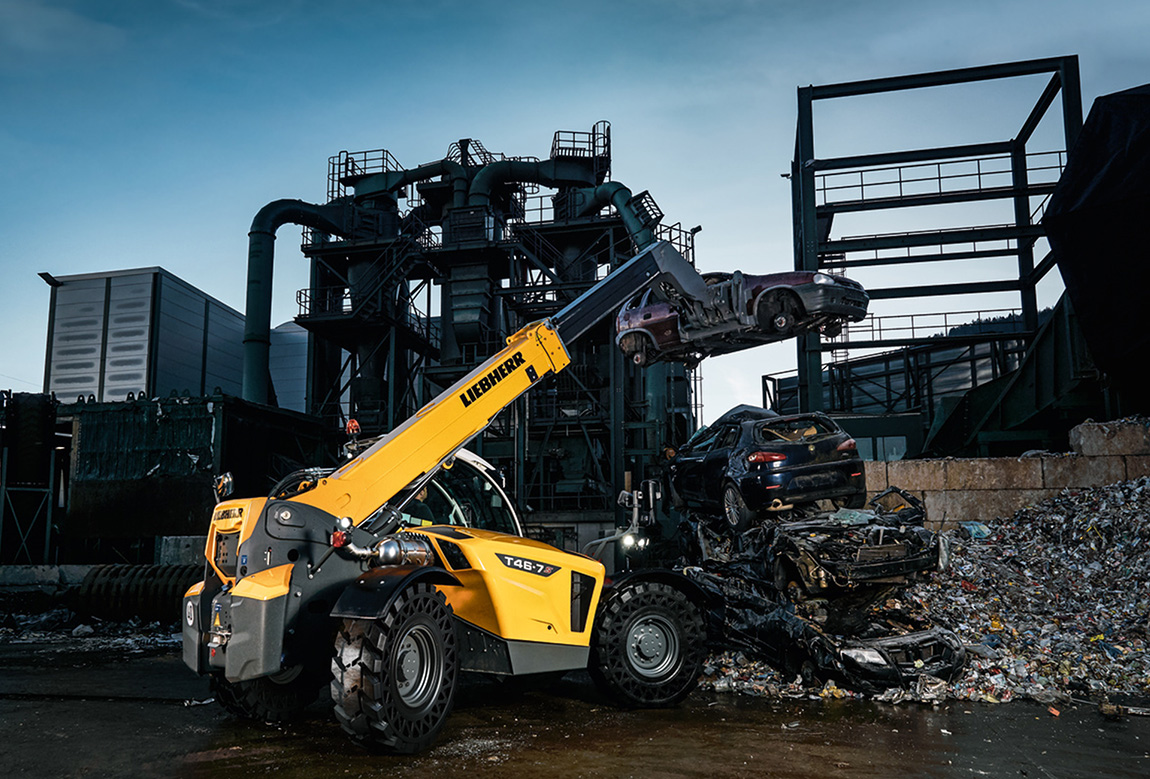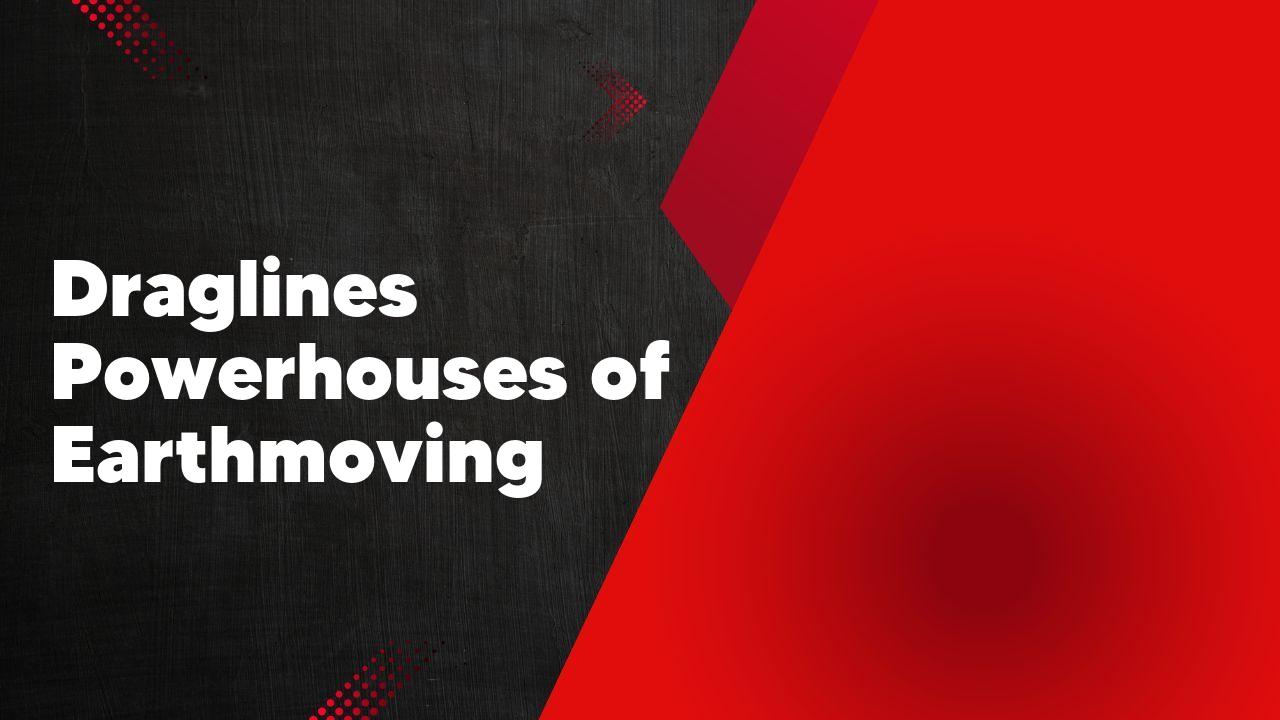Draglines are massive machines that play a crucial role in the field of earthmoving. These powerful giants are capable of moving enormous amounts of earth and rock, making them indispensable in industries such as mining and construction. In this article, we will explore the fascinating world of draglines and delve into their incredible capabilities and the impact they have on various sectors.
The Evolution of Draglines: From Simple Tools to Earthmoving Powerhouses
Draglines have come a long way since their humble beginnings as simple tools. Originally used for small-scale excavation and material handling, these machines have evolved into earthmoving powerhouses. With their massive size and impressive capabilities, modern draglines are capable of moving enormous amounts of earth and rock. Equipped with a large bucket suspended from a boom, draglines can dig deep into the ground and extract materials with ease. They are commonly used in mining operations, construction projects, and other heavy-duty applications. The evolution of draglines has been driven by advancements in technology, allowing for increased efficiency, productivity, and safety. Today, these machines play a crucial role in various industries, shaping the landscape and powering progress.
How Draglines Revolutionized the Earthmoving Industry

Draglines have completely transformed the earthmoving industry with their immense power and efficiency. These massive machines, equipped with a large bucket and a long boom, are capable of moving enormous amounts of earth in a single scoop. With their ability to dig deep and wide, draglines have made excavation projects faster and more cost-effective. They have also played a crucial role in mining operations, as they can extract large quantities of minerals and ores from the ground. The introduction of draglines has not only increased productivity but has also reduced the need for manual labor, making it safer for workers. Overall, draglines have revolutionized the earthmoving industry by providing a faster, more efficient, and safer method of excavation.
The Incredible Power and Efficiency of Draglines
Draglines are massive machines that are used in the mining industry to remove overburden and extract minerals from the earth. These behemoth machines are known for their incredible power and efficiency. With their long booms and large buckets, draglines can move huge amounts of material in a single scoop. They are capable of digging deep into the ground and can reach depths of up to 200 feet. The efficiency of draglines lies in their ability to operate on a continuous cycle, with minimal downtime for maintenance. This allows for maximum productivity and cost-effectiveness in mining operations. Overall, draglines are a vital tool in the mining industry, providing the power and efficiency needed to extract valuable resources from the earth.
The Versatility of Draglines: From Mining to Construction
Draglines are heavy equipment machines that are used in various industries, from mining to construction. These versatile machines are known for their ability to perform a wide range of tasks, making them an essential tool in many operations. In the mining industry, draglines are used to remove overburden and extract coal or other minerals from the earth. They are also used in construction projects to excavate large quantities of soil or rock, making them ideal for digging foundations or creating trenches. With their impressive lifting capacity and long reach, draglines are able to handle heavy loads and reach areas that other machines cannot. Overall, the versatility of draglines makes them a valuable asset in both mining and construction industries.
The Environmental Impact of Draglines: Balancing Efficiency and Sustainability
Draglines are large machines used in mining operations to remove overburden and extract valuable minerals. While they are highly efficient in terms of productivity, their environmental impact cannot be ignored. The use of draglines can result in deforestation, habitat destruction, and soil erosion. Additionally, the noise and vibrations generated by these machines can disrupt wildlife and disturb nearby communities. However, advancements in technology have allowed for the development of more sustainable draglines that minimize their environmental footprint. These include the use of electric power instead of diesel, implementing reclamation plans to restore the land after mining, and adopting best practices to reduce noise and vibration levels. Balancing efficiency and sustainability is crucial in ensuring that draglines can continue to contribute to mining operations while minimizing their negative impact on the environment.
The Future of Draglines: Advancements and Innovations in Earthmoving Technology
Advancements and innovations in earthmoving technology have paved the way for the future of draglines. These massive machines, used in mining and construction industries, are undergoing significant improvements to enhance their efficiency and productivity. One key area of development is automation, with draglines being equipped with advanced sensors and artificial intelligence systems to optimize their operations. This not only improves safety but also allows for more precise and accurate digging. Additionally, there have been advancements in the materials used for dragline components, making them lighter and more durable. This results in increased longevity and reduced maintenance costs. Overall, the future of draglines looks promising, with continued advancements driving their capabilities to new heights.
Conclusion
In conclusion, draglines are truly the powerhouses of earthmoving. Their immense size and strength allow them to move massive amounts of earth with ease. With their versatility and efficiency, draglines continue to play a crucial role in various industries, from mining to construction, shaping the landscape and driving progress.
What are draglines?
Draglines are large excavation machines that are used in earthmoving operations. They are equipped with a long boom and a bucket that is attached to a dragline cable. These machines are commonly used in mining and construction projects.
How do draglines work?
Draglines work by using the dragline cable to lift and move heavy loads. The bucket is lowered into the ground and filled with material, such as soil or rock. The dragline cable is then used to lift the bucket and swing it to the desired location. The material is then dumped or placed in the designated area.
What are the advantages of using draglines?
There are several advantages of using draglines in earthmoving operations. Firstly, draglines have a large digging capacity, allowing them to move large amounts of material quickly. They also have a long reach, which makes them suitable for working in deep excavations. Additionally, draglines are highly efficient and can be operated remotely, reducing the risk to operators.
What are the limitations of draglines?
While draglines are powerful machines, they do have some limitations. One limitation is their size and mobility. Draglines are large and heavy, which can make them difficult to transport and maneuver on certain terrains. Additionally, draglines require a skilled operator to operate them effectively, as they can be complex machines to control.
What are some common applications of draglines?
Draglines are commonly used in mining operations, particularly for removing overburden and extracting minerals. They are also used in large-scale construction projects, such as building dams or excavating foundations. Draglines can be used in any earthmoving operation that requires the movement of large amounts of material.
Are there different types of draglines?
Yes, there are different types of draglines available, each with its own specifications and capabilities. Some common types include walking draglines, which are self-propelled and can move on tracks, and crawler draglines, which are mounted on a crawler chassis. The specific type of dragline used depends on the requirements of the project and the conditions of the worksite.

